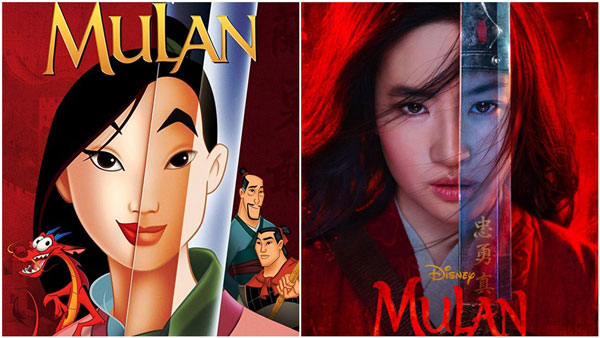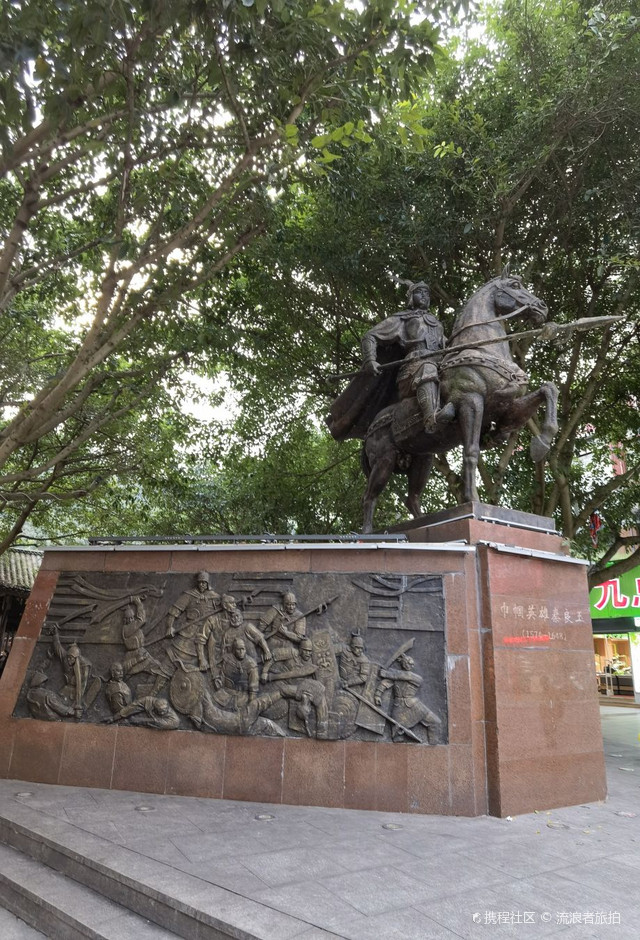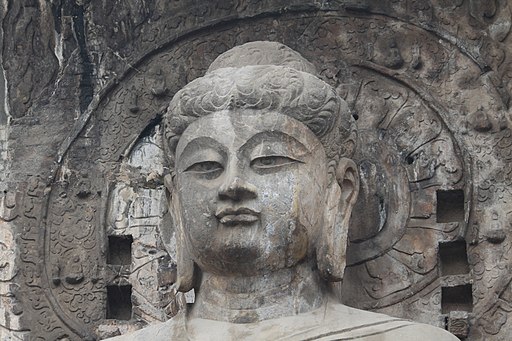5 Amazing Women in Chinese Legend and Literature for International Women’s Day
Some like to characterize Chinese culture as being supremely patriarchal and 重男轻女 (zhòng nán qīng nǚ, meaning to favour sons over daughters), yet Chinese history, legend and literature has many instances of extremely powerful women—a couple of whom would be considered superheroines that would give Wonder Woman or Captain Marvel a run for their money!
Why not #EmbraceEquity and share these women’s stories with your kids for International Women’s Day on March 8th?
1. Hua Mulan 花木兰 (Huā Mùlán)
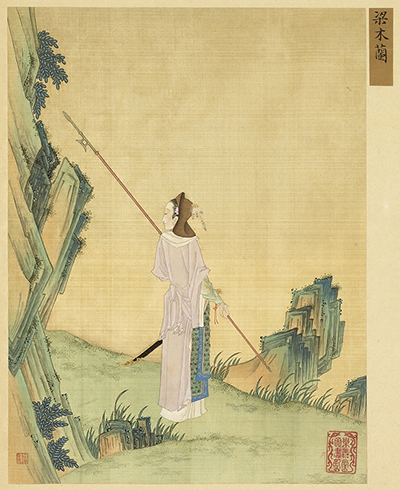
Mulan (木蘭), a Qing Dynasty painting by He Dazi (赫達資) from a series titled “Gathering Gems of Beauty (畫麗珠萃秀)”. From the collection of the National Palace Museum, Taipei
If there’s one Chinese heroine kids have heard of, it’s probably 木兰 Mu Lan, due to the Disney movies.
Her Story
Mulan famously disguised herself as a man to take her elderly father’s place in the army, when the kingdom started drafting men to fight the nomadic 柔然 Róurán invaders.
She distinguished herself in numerous battles over a period of around 12 years, for which the emperor honored her. But she declined to take up an official position, preferring to return to her family, whereupon she revealed her gender to the great surprise of her comrades.
So, quite different from the Disney version! No cricket or dragon sidekicks for sure!
Mulan first popped up in 木兰詩 (Mùlán shi), the Ballad of Mulan, a folk song believed to have been composed during the Northern Wei Dynasty (386-535 CE).
Her story has been adapted and embellished in numerous retellings over time. The Disney version is most probably inspired by the play by 12th Century playwright 徐渭 Xú Wèi, titled 雌木兰替父从军 (Cí Mùlán Tì Fù Cóngjūn; “The Heroine Mulan Goes to War in Her Father’s Place”)
So Was Mulan Real?
Some historians think so, as there were cases of women dressing as men and serving in the military at that time (about 400 AD)
But others argue she’s purely fictional as there’s no record of her other than in a folk song.
So until today, no one can confirm if she’s real or not.
Think that Mulan was far-fetched, and someone like her must be fictional? Please meet:
2. Qin Liangyu 秦良玉 (Qín Liángyù)
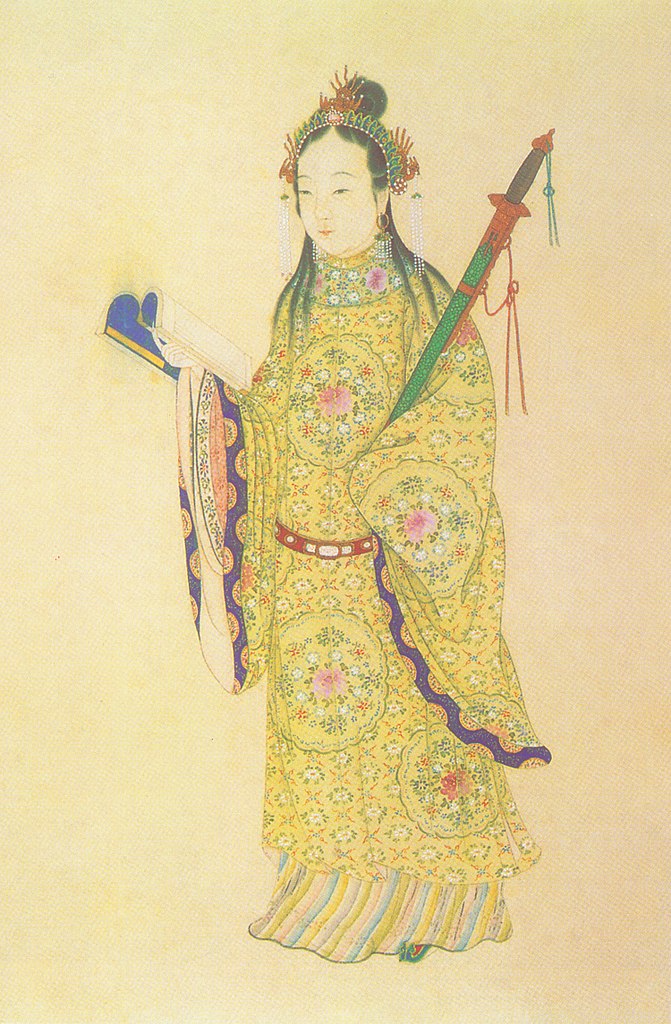
19th Century painting of 秦良玉 Qin Liangyu, from 浙江图书馆 Zhejiang Library
Her Story
If you thought Mulan was a badass warrior, 秦良玉 Qín Liángyù (1574–1648) was an actual military general!
She was born in Zhongzhou (忠州) in what is now 重慶 Chóngqìng in Sichuan province. Her father believed girls should get the same education as boys (Yay! Embrace Equity and a real case of 一视同仁)
So Qin Liangyu studied history, Confucian classics and also martial arts alongside her brothers. In fact, she did better than her brothers in martial arts, archery and horse-riding. And apparently, she was quite a good poet too. Talk about an all-rounder!
She later married an official whose job was to keep the local warlords in line, and actually commanded troops in support of her husband when he had to suppress a rebellion.
After her husband died, she took over his post, and her troops became known as the 白杆兵 (Bái gān bīng; White Cavalry), which included an elite unit of several hundred women soldiers.
She became famous when her forces defeated various attacks by both rebels and invaders. The Ming Emperor honored her by making her the Crown Prince’s Guardian and gave her a noble title.
When the Ming Empire was overthrown by the Qing/Manchu Dynasty, she retreated to territory controlled by Ming loyalists, where her agricultural policies attracted many people fleeing the Qing.
She died in 1648 CE at the age of 75, while dismounting her horse, and is buried in Chongqing.
Did You Know?
You can see Qin Liangyu’s weapons, armour and statues in the 秦良玉陵园 (Qínliángyù língyuán) Qin Liangyu Museum in Shizhu County, Chongqing, Sichuan province.
Here’s a video introduction to 秦良玉 Qín Liángyù in Mandarin Chinese:
3. Wu Zetian 武则天 (Wǔ Zétiān)
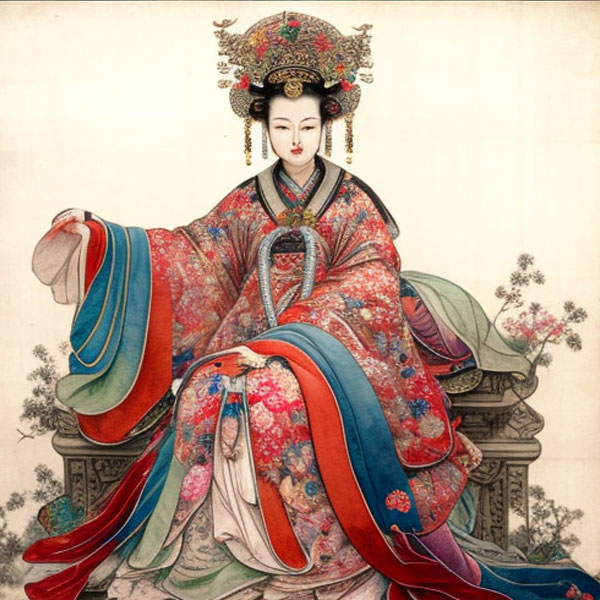
Empress Wu Zetian 武则天, image generated with MidJourney AI
Her Story
武则天 Wǔ Zétiān is the only woman Emperor in the history of China—as in, the actual recognised ruler of the Empire, not just the wife of the Emperor, or the person actually pulling the strings behind the scenes.
She basically interrupted the Tang Dynasty (618 to 907 CE) with her own self-proclaimed Zhou Dynasty 武周 (Wǔ zhōu) in 690, before the Tang took over again in 705. But she actually began building power as far back as 624. She eventually passed away at the age of 81.
She is always described as ambitious and ruthless, but also as one of the most competent, effective and intelligent emperors in Chinese history.
Game of Thrones
Hoo boy, is her story complex!
She was born into a well-off merchant family, and historians say she preferred reading and learning about politics than the fluffy stuff girls used to do back in the day.
This is a VERY simplified account of her rise: She started out in her teens as a consort to Emperor Taizong. After he died, she got rid of Taizong’s empress and married Taizong’s son, Emperor Gaozong. She was the real power during Gaozong’s reign, and all important decisions needed her approval. After Gaozong died, she basically ruled behind her son, Emperor Zhongzong.
During all this time, she wiped out all rivals, potential rivals and impediments to her power. She even deposed her son as emperor and replaced him with another son, Emperor Ruizong, then finally deposed him too, and took over herself and established the Zhou Dynasty.
Eventually, she got old and sick, and her rivals managed to get her to abdicate in favour of her son Zhongzong (whom she’d deposed earlier), and the Tang Dynasty was restored.
Her Achievements
She improved and expanded China’s civil service exams, promoted Buddhism, and expanded China’s empire further than ever. As far as the masses were concerned, hers was a well-run administration that delivered improved standards of living.
The people’s fascination with Wu Zetian continues to this day, and she has been featured in numerous books, films and TV shows.
Did You Know?
At the Longmen Grottoes in Luoyang in Henan Province (a UNESCO World Heritage Site), the face of the largest Buddha statue is supposed to be that of Wu Zetian at the age of 44.
Here’s a documentary in English on Wu Zetian:
4. 郑一嫂 (Zhèng Yī Sǎo), the Queen of the Pirates
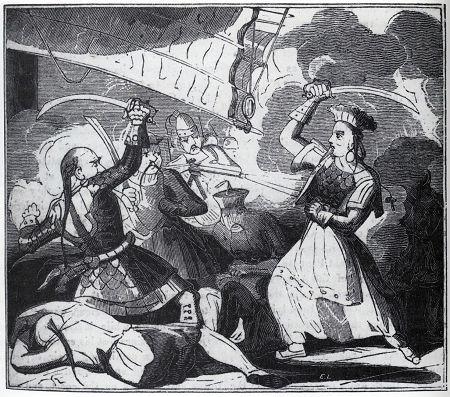
An 1836 illustration of Ching Shih reproduced in “Pirates: An Illustrated History of Privateers, Buccaneers & Pirates from the Sixteenth Century to the Present” (London, 1996)
Her Story
郑一嫂 Zhèng Yī Sǎo is arguably the greatest pirate in history. Not just female pirate, but ALL pirates, and in ALL of history, not just Chinese history.
Kind of like how Wu Zetian became Emperor after first marrying one, Zheng Yi Sao started piracy when she married 郑一Zhèng Yī, a notorious pirate at that time.
Born 石陽 Shí Yáng in 1775, she became known as 郑一嫂 (Zhèng Yī Sǎo; Mrs Zheng Yi) and helped her husband organize his operations. In fact, she is credited with brokering an arrangement with various pirate crews to form a confederation.
When Zheng Yi died (he fell overboard in a storm in 1807), she took over his fleet and started being referred to as 鄭氏 (Zhèng Shì, or in the old Wade-Giles Romanization system, ‘Ching Shih’; meaning “Zheng’s widow”).
Zheng Yi Sao remarried Zheng Yi’s adopted son, 张保 (Zhāng Bǎo or “Cheung Po”) and at her peak. commanded over 80,000 men and over 1,800 ships. (Probably the most famous Western pirate, Edward “Blackbeard” Teach, only commanded 300 pirates and 4 ships. The current US Navy only has 495 ships!)
The Qing government, the British East India Company and the Portuguese Navy all tried to take Zheng Yi Sao’s fleet down, but failed.
Eventually, in 1810, Zheng Yi Sao managed to negotiate a “surrender” to the Qing government—under extremely generous conditions. Zhang Bao became a Qing navy lieutenant, and they were allowed to keep a small fleet for themselves. Plus, all their crews were not only pardoned, but given money, wine and pork!
In 1844, after a peaceful “retirement” running a notorious gambling den near Macao, Zheng Yi Sao finally passed away at the age of 69.
Did You Know?
Zheng Yi Sao’s life has inspired tv shows, novels, movies, musicals, video games and more. Characters based on her have even appeared in the Pirates of the Caribbean movies, Dr Who episodes and Sailor Moon manga!
Here’s a VR experience based on her life that’s been screened at SXSW and Cannes:
5. 小龙女 (Xiǎolóngnǚ) the Little Dragon Maiden
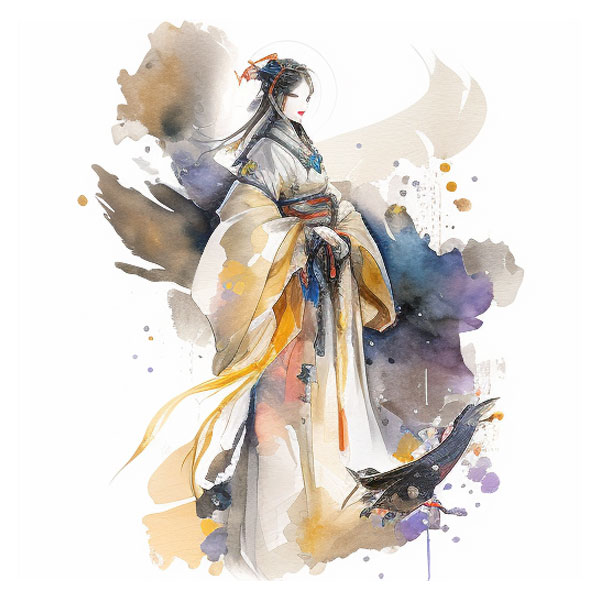
小龙女 (Xiǎolóngnǚ) the Little Dragon Maiden from Jin Yong’s wuxia novel 神雕侠侣 The Return of the Condor Heroes. Image generated by Midjourney AI
Her Story
小龙女 (Xiǎolóngnǚ; The Little Dragon Maiden) is the fictional female protagonist in the wuxia (martial arts epic) novel 神雕侠侣 (Shén diāo xiá lǚ) The Return of the Condor Heroes by Jin Yong, which is perhaps the most famous and beloved modern fantasy series in the Chinese-speaking world (on par with what The Lord of the Rings is to the English readers). It’s been adapted into multiple series and movies!
As you can expect from any good epic, the story has many twists and turns. But in a nutshell, Xiaolongnu is a foundling who winds up in the Ancient Tomb School, where she is raised and taught martial arts. She eventually winds up leading the school.
Later, she meets the male protagonist 杨过 Yáng Guò, and takes him on as an apprentice. They eventually fall in love, but like in all good epics, their road is fraught with difficulties and adventures.
Powers
Xiaolongnu doesn’t just kick butt. Her training has imbued her with magical techniques with cool names like 玉女心经 (yùnǚ xīnjīng; the Jade Maiden Heart Sutra and 天罗地网式 (tiānluó dìwǎng shì; Palm of Infinity Web! And of course she can defy gravity too!
And Wonder Woman with her bracelets and magic lasso have NOTHING on Xiaolongnu’s impenetrable silver gloves, acupuncture point-attacking sash of gold bells, poison darts, and swarm of bees that obeys her commands!
Did You Know?
For most of the novel, Yang Guo does not address Xiaolongnu as “Master”, preferring to call her “Aunt” instead.
Check out these amazing fight sequences from this 2006 TV adaptation of Return of the Condor Heroes:
You may be interested in:
Yumcha Studios
Follow us on:
Dim Sum Warriors 点心侠® and © Yumcha Studios Pte Ltd. All Rights Reserved.

